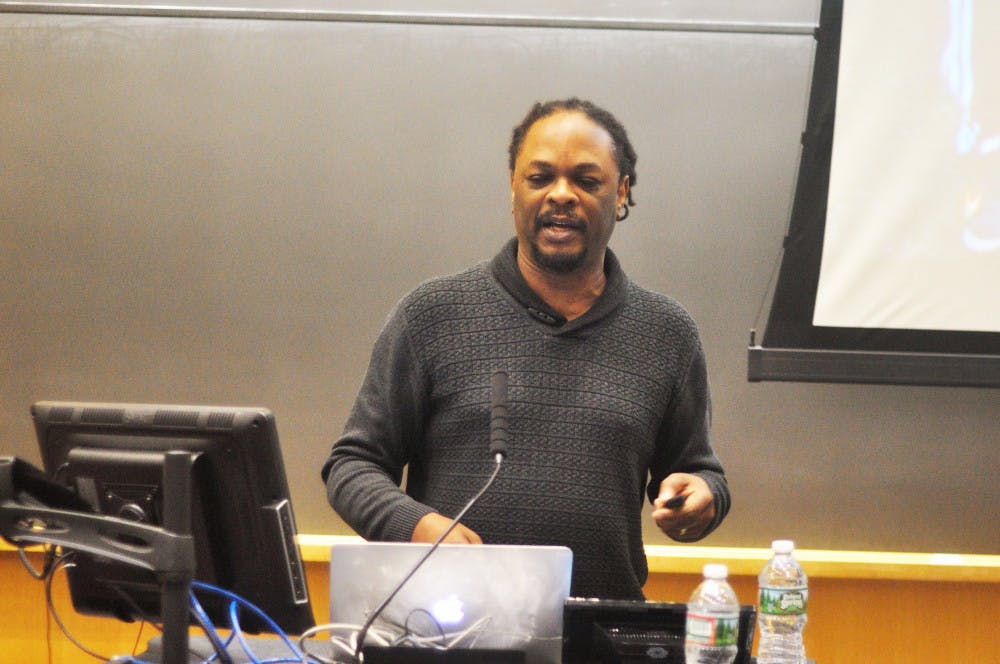“Racism equals a societal cancer,” said author Lawrence Ross as he opened his lecture, “Blackballed: The Politics of Race on America’s Campuses,” Saturday evening. Ross discussed the presence of black students on university campuses and student activism with regard to social justice across the country.
“Most (pre-college) kids are not thinking about campus racism. … We almost think about college like Disneyland,” but racism continues to be a reality at American universities, he said.
Campus symbolism — specifically, buildings or statues that pay homage to historically problematic or offensive figures — furthers this message, Ross said. For example, the University of Virginia Medical Center is named after Harvey Jackson, a eugenicist known for “forcibly steriliz(ing) thousands of African-Americans,” and Tillman Hall at Clemson University honors Benjamin Tillman, one of the most aggressive, threatening racist figures on the early 20th century, he said.
“How would you feel if you had to go into these buildings named after people who denigrate you?” Ross asked. Taking down racially problematic homages is easy, Ross said, adding “Americans take down statues all the time, just not in our country.”
Ross also addressed the histories of Greek organizations. While Ross said he has long been an advocate for fraternities and Panhellenic sororities, many of their members do not understand the history behind their organizations.
As late as 1947, the interfraternity conference openly condoned discriminatory policies, Ross said. Once Greek organizations began desegregation, some groups adopted more implicit policies in order to maintain predominantly white pledge classes. Ross criticized University of Florida’s Beta Theta Pi, which held a “Rockstars and Rappers” party at which some partygoers wore blackface. There is “the nice, gentle term of cultural appropriation, (but) I still call it racism,” Ross said.
Ross also commented on the demonstrations and activism that erupted across college campuses last year. “Students of this generation have been transformed by the Black Lives Matter movement” and are challenging the ways in which their universities marginalize them, Ross said.
During the question-and-answer session that followed the lecture, an audience member voiced concerns that the current wave of protests does not have “the intensity that there was in the ’60s, ’70s, ’80s … It just seems like it’s more social media.” But Ross said that though it is natural for activists from previous movements to be skeptical of new ones, every generation has its “own method for creating systemic change.”
Ross called on white students to “get out of your comfort zone when it comes to your place in racism.”
“The one thing that is the kryptonite to white supremacy … is getting a higher education,” Ross said. But it’s important to remember that students of color initially began attending “predominantly white institutions” under quota conditions, because universities aimed “never to have enough minorities on campus to disrupt” the institutional status quo, Ross said.
This, in tandem with a K-12 educational system that “codifies political inequities,” is the context in which we should understand affirmative action, Ross said. But anti-affirmative action sentiments — defined by white students’ beliefs that students of color gain admission to university illegitimately — send a message to students of color that “you don’t belong on campus,” he said.





